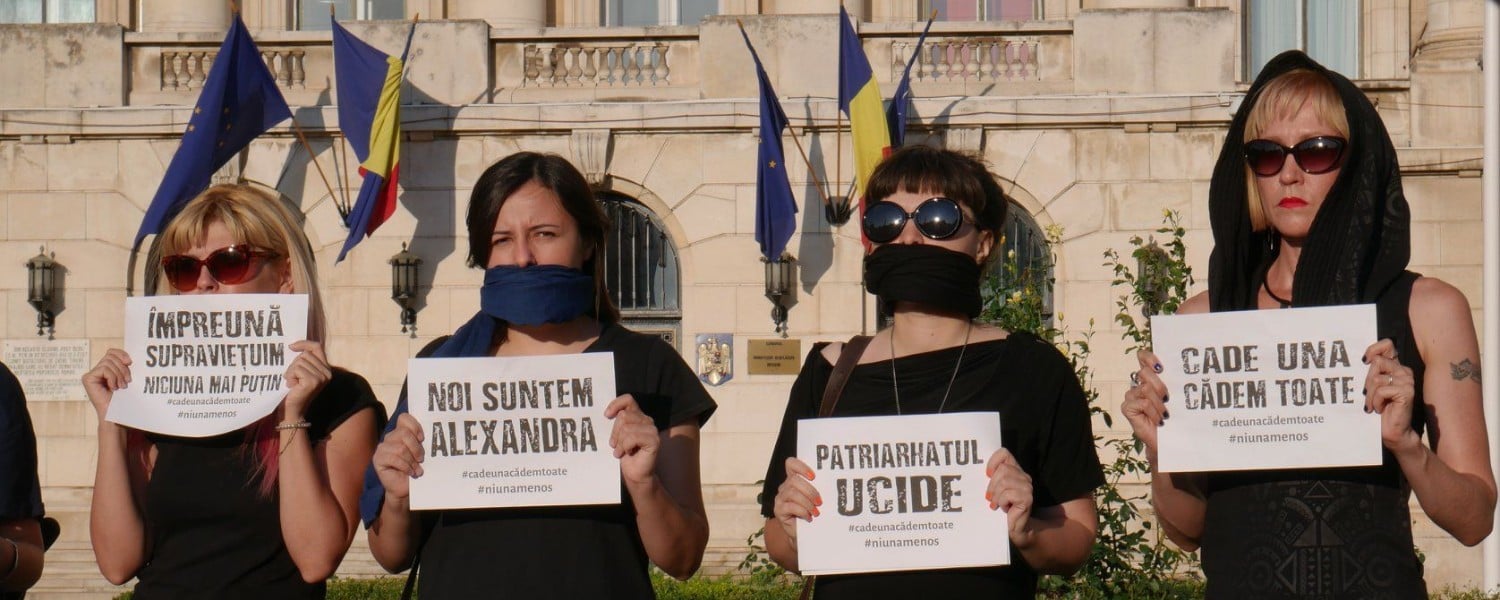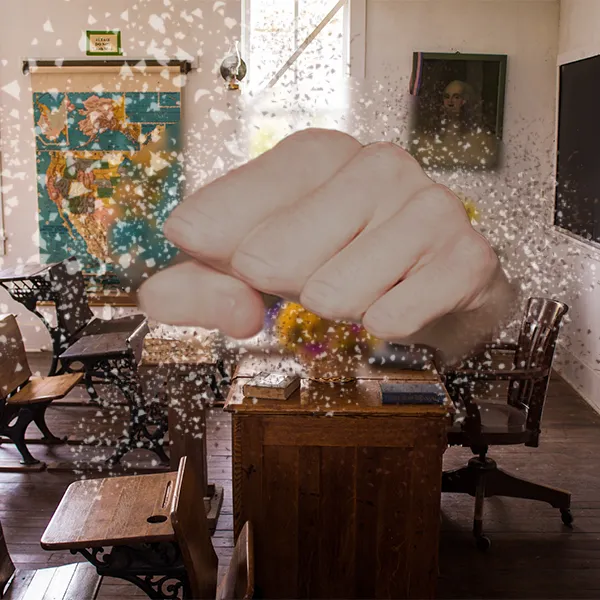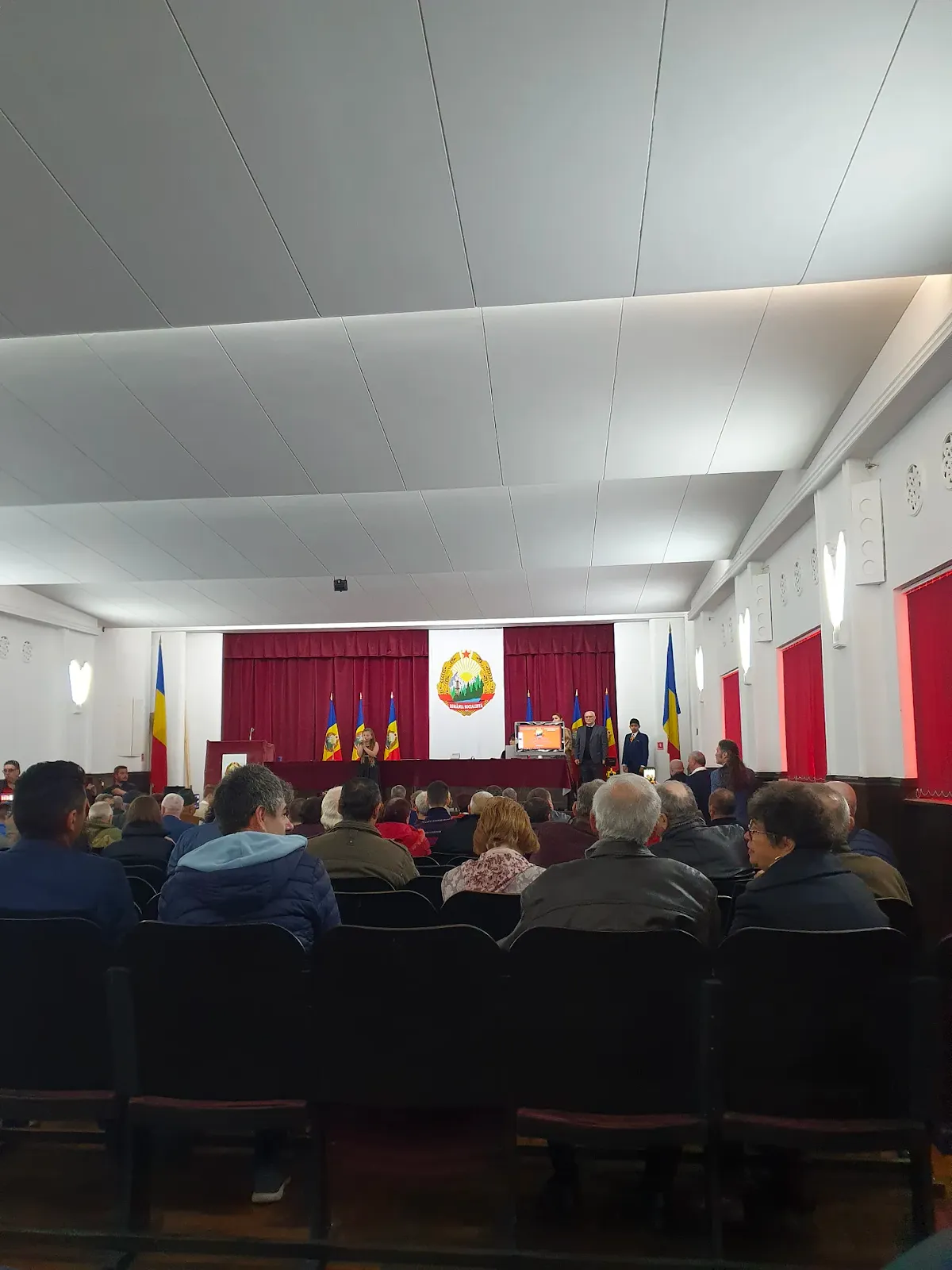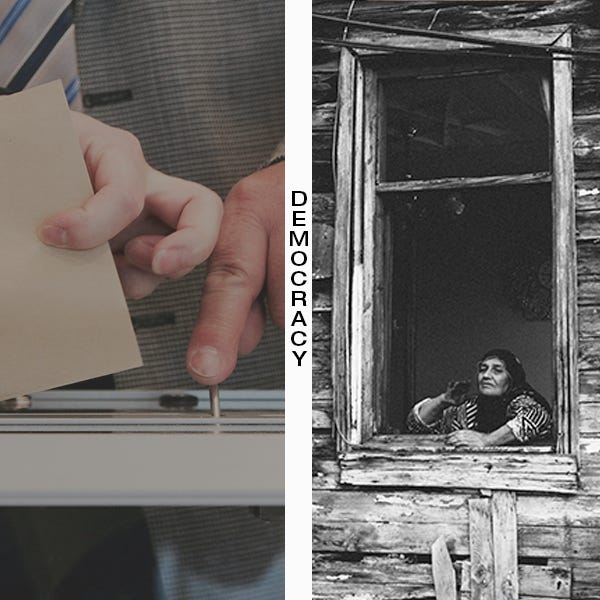The protest “If one falls, we all fall!”, which took place before the internal ministry in Bucharest on Sunday, July 28, was a reaction against the suspected killing of two adolescents from the town of Caracal – Luiza Melencu and Alexandra Măceşanu, and against limiting the public discourse on the topic to issues of corruption and institutional disorder, as well as against the weaponization for political gains. “Not corruption, but patriarchy kills!” is one of the central messages of the protesters, who have spoken out about structural violence against women. Despite data showing that Romania has a real problem with violence against women, this remains a largely ignored subject. Messages such as “Sexism kills!” and “Police kill!” oppose the normalisastion of abuse and violence against women, which often starts at home. Statistics show that one out of four gender-based murders take place in the victim’s family. 81% of cases of domestic violence occur at the place of settlement – both in rural (53% of cases) and urban zones (47% of cases). Women are victims in 81% of the cases of gender-based violence and in 92% of the cases men are the aggressors. One out of four Romanian women has been abused physically or sexually by her partner, but only 4% of cases reach the courts.
Violence against women is implicitly and explicitly accepted by society – through sexist humour, victim blaming, street harrassment, and advertisements, images and songs which reduce women to objects of men’s fantasies. These forms of aggression further degrade and promote violence against women, including on an instutitional level where there is a lack of adequate protective mechanisms for the victims of physical and sexual violence. This also happens through the attitude of the authorities – through policemen who insult you, make you feel guilty, make jokes about women who file complaints and advise those women “to keep it in family”, through prosecutors who reject complaints and orders of protection (for abused women), through judges who criticise and denigrate the victims of violence and protect the aggressors, and through authorities’ complicity in cases of human trafficking.
Criticism against patriarchy, which is almost an eccentricity in mainstream Romanian discourse, aims to deconstruct misogynist culture, a culture that quickly snowballs from the first years of education at home (“boys don’t cry”, “women are meant to listen”) and into the classroom (in textbooks, which teach children that the majority of historic figures were men and construct stereotypical gender roles – the woman who takes care of the home, and the man who is independent and an entrepreneur). The same is done in pop culture and by the underrepresentation of women in positions of power – be it in the public or private sector.
The resistance to systematic violence, a violence both born from and supported by this culture and which minimizes the power, autonomy, suffering and abilities of women, is not something new and is not limited to Romanian society. There is a whole history of feminist movements, which take up this fight, but that is not the subject of this text. I will only refer to one of the recent global movements, with which the protest “If One Falls, We All Fall!”, shares similarities and solidarity, as the name, the slogans and the approaches to the issues show:
“We will survive together! Not one less!”, “Patriarchy and the state are the same sh*t!”, “Stop violence against women!”, “Patriarchy kills”, and #cadeundacademtoate (#ifonefallsweallfall) #niunamenos (#notoneless) #sexismulucide (#sexismkills)
The protest on 28 July 2019 joins the stage of a wider intersectional feminist movement – Ni una menos (Not one less). This movement has its origin in Argentina in 2015 as a reaction to the murder of a 14 year-old adolescent, whose death was seen as a symptom of the gender-based violence widely present in society. It then extended through the region to Peru, Chile and Uruguay and became a symbol of the alliance against femicide in Latin America (femicide is often the result of domestic violence and of partner violence – just as it is in Romania), against the misogynist culture, which supports gendered violence, women’s objectification and sexual harassment. It extended further to Europe, where recent examples were the Non Una di Meno protests in Italy in 2018 and 2019 and the mass movements in Spain Ni Una Menos. In Spain, the movement was amplified by the protests YoSiTeCreo (“I believe you”) in April 2018, which were a reaction against the court’s light punishment of 5 men, who called themselves “la manada” (the gang), indicted for the gang rape of a teenage girl.
All these movements share common traits and a similar agenda, which is not limited to gender-based violence. They set as a higher goal the deconstruction of patriarchy and the common narrative through which gender-based violence is justified, such as: the importance of the “morality” and “values” of the victim (how she dresses, what occupation she has, did she “provoke” the aggressors) or the individual pathology of aggressors (“this is a separate case/he is crazy”). These movements propose that causal connections must be made in order to explain this violence, moving the focus from the victim to the system which feeds the violence. They propose a deeper analysis and deconstruction of the power relations within society, of the ways in which these relations support structural violence against the most vulnerable, from the perspective of gender identity, ethnicity, socio-economic status, age and sexual orientation. These are movements against all forms of individual and systemic abuse, be it physical, sexual, economic or authoritarian.
These principles are reflected in the way these movements are organised and how they function as non-hierarchical and inclusive, transnational, and intersectional structures. This is visible in the manifestos and appeals for international solidarity, launched by movements such as Ni Una Menos with view towards the organisation of the protests on March 8th – the International Day of Woman. This is the case with the “If One Falls, We all Fall” protests, which don’t have assumed leaders, but are realised by activists fighting for women’s rights, Roma people, and the LGBTQ+ communities within and outside of the movement.
Additionally, the message “Police kill” on the wall of the internal ministry’s building, conveys activists’ fears over the strengthening of the repressive state apparatus and the destruction of social services. The blatant suppression of debate on the murders of the two teenagers by centering the anti-corruption discourse is part of the same fight: A fight against abuse from the patriarchal structures’ financial and armed branches. At this time, the protest has given birth to one big question, when people shout: “We want security on the streets and at home!”: Who and how will provide security and at what cost?
At this tense moment, the risk is that people will be motivated by indignation and strong emotions to find immediate solutions and that these solutions will strengthen the repressive apparatus – growing the number of policemen on the street and the scope of their power, intensifying of state surveillance, emphasising punishment instead of prevention, etc. Or society could slip in a moment, completely lose trust in people and institutions, towards extreme right attitudes and an even deeper erosion of social support through neoliberal measures promoted by “new people” with big words such as “change”. The risk is that all the costs would be felt the deepest by the most vulnerable people, who we try to protect.
I conclude with a verse from a poem by Medeea Iancu, read during the protest:
Is paradise the only place, where women can feel
safe?
The photos from the protest are provided by Nicoleta Moise (Cutra Magazine):
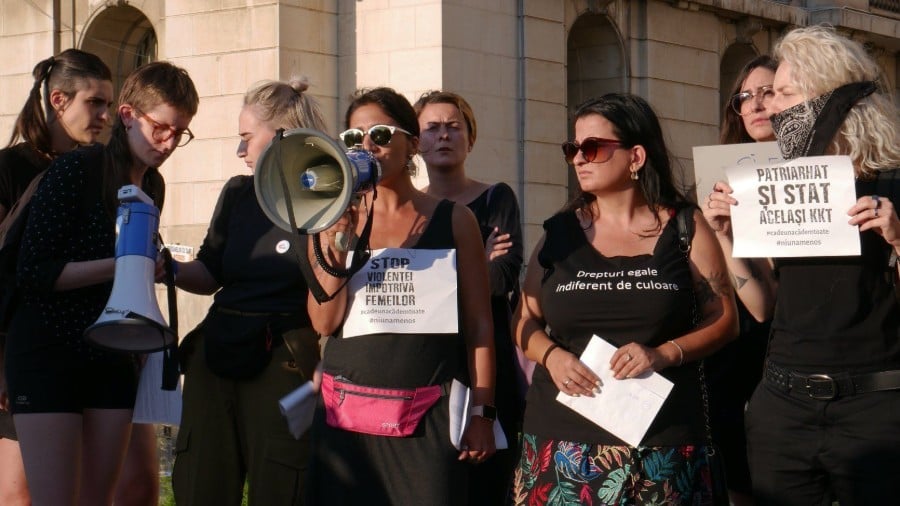
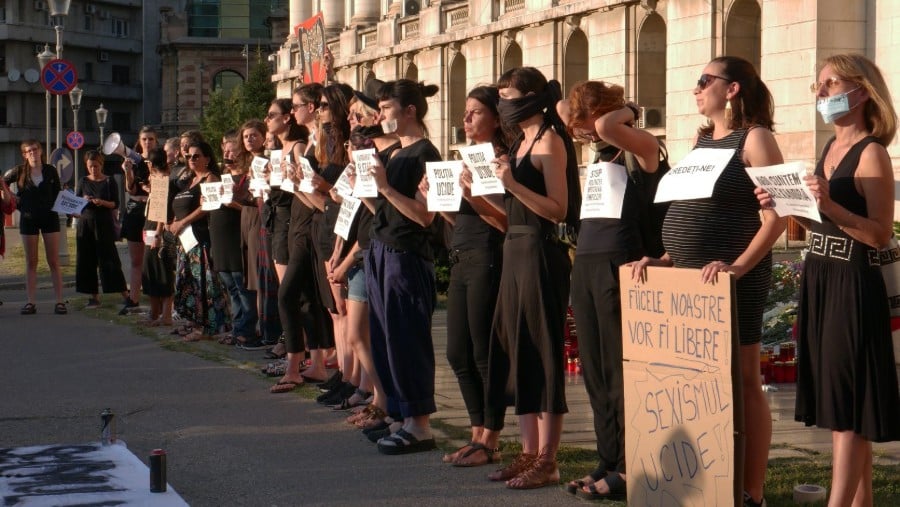
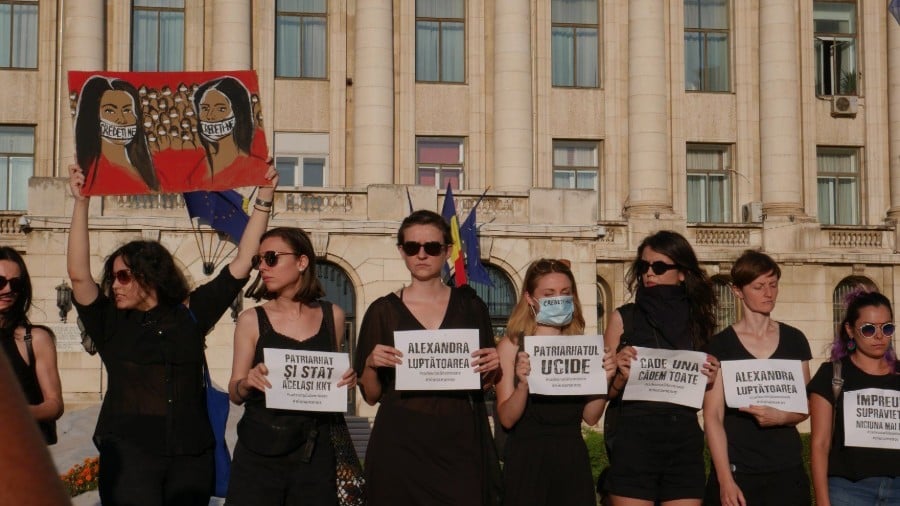
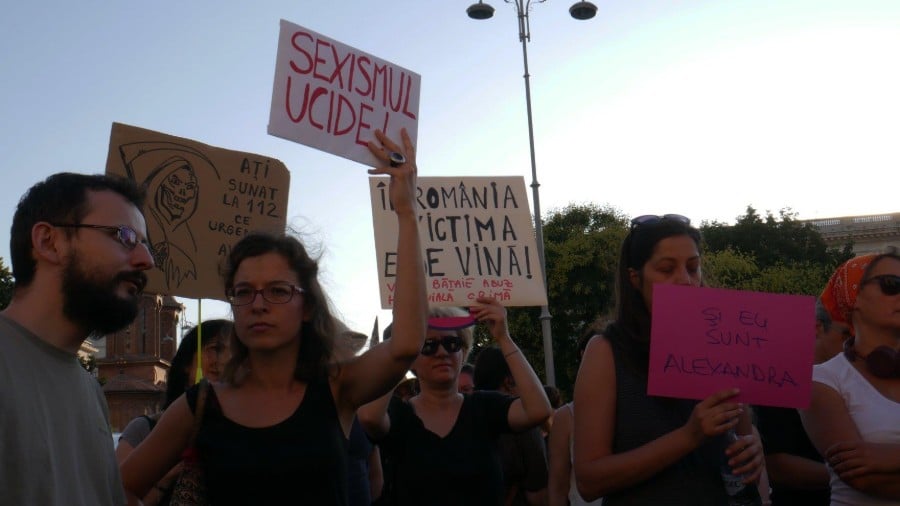
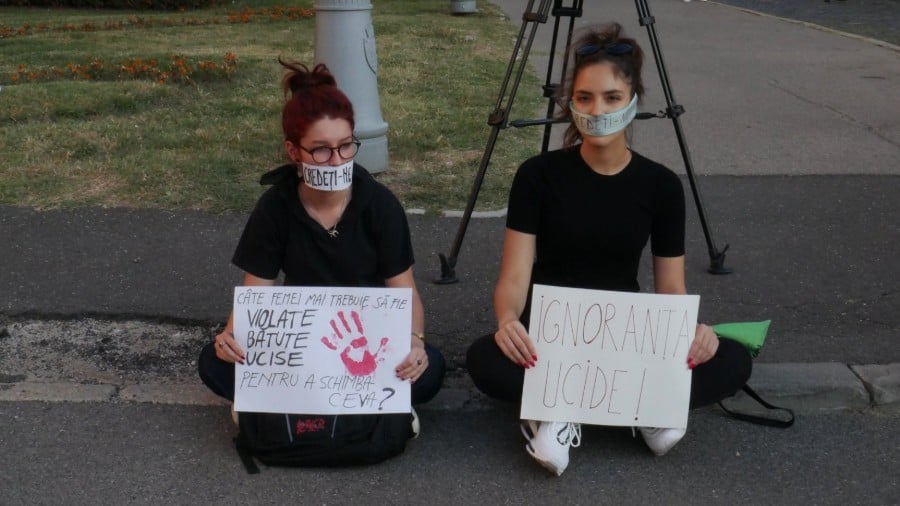
Photo: The protest before the internal ministry in Bucharest (source: Nicoleta Moise, Cutra Magazine)
The Barricade is an independent platform, which is supported financially by its readers. Become one of them! If you have enjoyed reading this article, support The Barricade’s existence! We need you! See how you can help – here!
